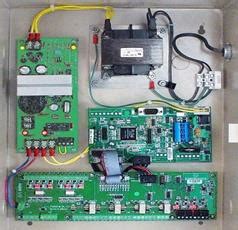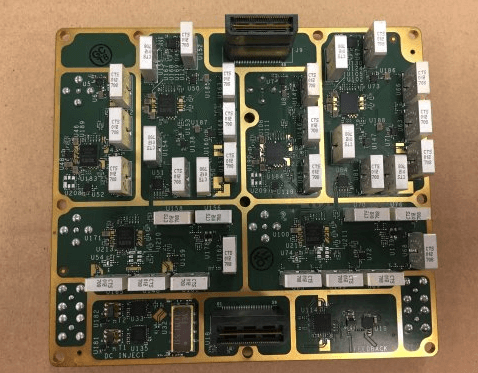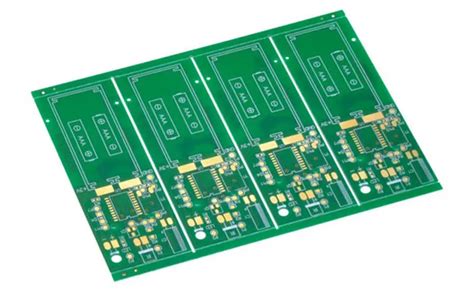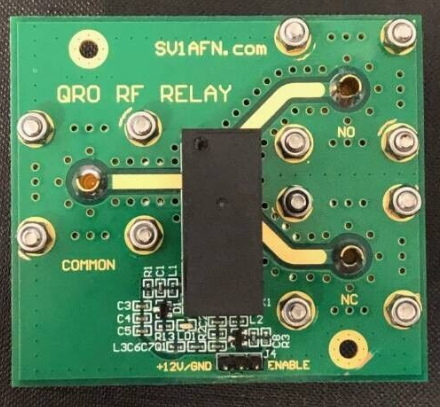China metal core pcb keyboard
Advantages Of Metal Core PCBs In Keyboard Manufacturing
In the realm of keyboard manufacturing, the choice of materials and components plays a crucial role in determining the overall performance, durability, and user experience of the final product. One of the emerging trends in this industry is the use of metal core printed circuit boards (PCBs), particularly in the context of Chinese manufacturing. Metal core PCBs offer a range of advantages that make them an attractive option for keyboard manufacturers seeking to enhance the quality and functionality of their products.
To begin with, metal core PCBs are renowned for their superior thermal management capabilities.
Unlike traditional PCBs, which are typically made from fiberglass or other non-metallic materials, metal core PCBs incorporate a metal layer—usually aluminum or copper—that effectively dissipates heat. This is particularly beneficial in keyboard applications where heat generation can be a concern, especially in high-performance or backlit models. By efficiently managing heat, metal core PCBs help prevent overheating, thereby extending the lifespan of the keyboard and ensuring consistent performance over time.
Moreover, the mechanical stability provided by metal core PCBs is another significant advantage
The inherent strength of the metal layer offers enhanced rigidity and durability, which is crucial in withstanding the physical stresses that keyboards often endure during regular use. This robustness not only contributes to the longevity of the keyboard but also enhances its reliability, making it less prone to damage from accidental drops or impacts. Consequently, manufacturers can offer products that meet higher quality standards, thereby increasing consumer trust and satisfaction.
In addition to thermal and mechanical benefits, metal core PCBs also contribute to improved electrical performance.
The metal layer serves as an excellent conductor, which can lead to reduced electrical resistance and improved signal integrity. This is particularly important in keyboards that require precise and rapid signal transmission, such as those used in gaming or professional environments. By ensuring that signals are transmitted quickly and accurately, metal core PCBs help enhance the responsiveness and overall user experience of the keyboard.
Furthermore, the use of metal core PCBs aligns with the growing demand for environmentally sustainable manufacturing practices.
The materials used in these PCBs are often recyclable, and the efficient thermal management they provide can lead to reduced energy consumption during operation. This not only benefits the environment but also offers cost savings for manufacturers and consumers alike, as energy-efficient products tend to have lower operational costs.
Transitioning to the economic aspect, it is worth noting that China has become a leading hub for the production of metal core PCBs, thanks to its advanced manufacturing capabilities and cost-effective production processes.
Chinese manufacturers are able to produce high-quality metal core PCBs at competitive prices, making them an attractive option for keyboard manufacturers worldwide. This accessibility to affordable yet high-quality components allows manufacturers to innovate and offer advanced features without significantly increasing production costs.
In conclusion, the integration of metal core PCBs in keyboard manufacturing presents numerous advantages, ranging from enhanced thermal management and mechanical stability to improved electrical performance and environmental sustainability. As the demand for high-performance and durable keyboards continues to grow, the adoption of metal core PCBs is likely to become increasingly prevalent, driven by the capabilities and efficiencies offered by Chinese manufacturing. This trend not only benefits manufacturers but also ultimately enhances the user experience, making it a compelling choice in the ever-evolving landscape of keyboard technology.

Innovations In China’s Metal Core PCB Keyboard Industry
In recent years, the metal core printed circuit board (PCB) keyboard industry in China has witnessed significant innovations, positioning the country as a leader in this niche market. Metal core PCBs, known for their superior thermal management capabilities, have become increasingly popular in various applications, including high-performance keyboards. This surge in demand has spurred Chinese manufacturers to invest in research and development, leading to groundbreaking advancements that are reshaping the industry.
One of the most notable innovations in China’s metal core PCB keyboard industry is the development of advanced thermal management solutions.
Traditional PCBs often struggle with heat dissipation, which can lead to performance issues and reduced lifespan of electronic components. However, metal core PCBs, with their metal substrate, offer enhanced thermal conductivity, effectively dissipating heat away from critical components. Chinese manufacturers have taken this a step further by integrating innovative materials and design techniques, ensuring that keyboards remain cool even during prolonged use. This focus on thermal management not only enhances performance but also contributes to the durability and reliability of the keyboards.
Moreover, the Chinese metal core PCB keyboard industry has made significant strides in miniaturization and design flexibility.
As consumer preferences shift towards sleeker and more compact devices, manufacturers are challenged to create keyboards that are both functional and aesthetically pleasing. By leveraging the inherent properties of metal core PCBs, such as their ability to support high-density component placement, Chinese companies have been able to produce keyboards that are not only thinner but also more versatile in design. This has opened up new possibilities for customization, allowing consumers to enjoy keyboards that cater to their specific needs and preferences.
In addition to thermal management and design flexibility, the industry has also seen advancements in manufacturing processes.
Chinese manufacturers have adopted cutting-edge technologies such as automated assembly lines and precision machining, which have significantly improved production efficiency and product quality. These technological advancements have enabled manufacturers to meet the growing global demand for metal core PCB keyboards while maintaining competitive pricing. Furthermore, the emphasis on quality control and rigorous testing procedures ensures that the keyboards produced meet international standards, bolstering China’s reputation as a reliable supplier in the global market.
Another key innovation in the industry is the integration of smart features into metal core PCB keyboards.
As the world becomes increasingly interconnected, there is a growing demand for keyboards that offer more than just basic typing functions. Chinese manufacturers have responded by incorporating features such as programmable keys, customizable lighting, and wireless connectivity into their products. These smart features not only enhance user experience but also add value to the keyboards, making them more appealing to tech-savvy consumers.
In conclusion, the innovations in China’s metal core PCB keyboard industry have been instrumental in driving the market forward.
Through advancements in thermal management, design flexibility, manufacturing processes, and smart features, Chinese manufacturers have positioned themselves at the forefront of this rapidly evolving industry. As the demand for high-performance keyboards continues to grow, it is expected that China will remain a key player, continually pushing the boundaries of what is possible in metal core PCB technology. This commitment to innovation not only benefits consumers but also solidifies China’s status as a global leader in the electronics manufacturing sector.

Comparing Metal Core PCBs To Traditional PCBs In Keyboards
In the realm of keyboard manufacturing, the choice of printed circuit boards (PCBs) plays a crucial role in determining the performance, durability, and overall user experience of the final product. Among the various types of PCBs available, metal core PCBs (MCPCBs) have emerged as a noteworthy alternative to traditional PCBs, particularly in the context of keyboards. Understanding the differences between these two types of PCBs is essential for manufacturers and consumers alike, as it influences both the design and functionality of keyboards.
Traditional PCBs, typically made from fiberglass-reinforced epoxy laminate, have been the standard in keyboard manufacturing for many years.
These PCBs are known for their cost-effectiveness and ease of production, making them a popular choice for mass-produced keyboards. However, they have certain limitations, particularly in terms of heat dissipation and mechanical strength. This is where metal core PCBs offer a distinct advantage. MCPCBs incorporate a metal core, usually aluminum or copper, which significantly enhances their thermal conductivity. This feature is particularly beneficial in keyboards that incorporate backlighting or other electronic components that generate heat, as it helps to dissipate heat more efficiently, thereby prolonging the lifespan of the components and maintaining optimal performance.
Moreover, the mechanical strength of metal core PCBs is superior to that of traditional PCBs.
The metal core provides additional rigidity, which can be advantageous in keyboards that are subject to frequent use or potential physical stress. This increased durability can lead to a longer lifespan for the keyboard, reducing the need for repairs or replacements. Additionally, the enhanced structural integrity of MCPCBs can contribute to a more stable and consistent typing experience, which is a critical factor for users who rely on keyboards for extended periods.
Despite these advantages, there are also considerations that must be taken into account when opting for metal core PCBs.
One of the primary challenges is the cost. The materials and manufacturing processes involved in producing MCPCBs are generally more expensive than those for traditional PCBs. This can result in higher production costs, which may be passed on to consumers in the form of more expensive keyboards. However, for users who prioritize performance and durability, the investment in a keyboard with a metal core PCB may be justified.
Furthermore, the design and manufacturing processes for metal core PCBs can be more complex.
The presence of a metal core requires specialized techniques for drilling and etching, which can complicate the production process. Manufacturers must weigh these complexities against the potential benefits when deciding whether to incorporate MCPCBs into their keyboard designs.
In conclusion, the choice between metal core PCBs and traditional PCBs in keyboards involves a careful consideration of various factors, including thermal management, mechanical strength, cost, and manufacturing complexity. While traditional PCBs remain a viable option for many applications, metal core PCBs offer distinct advantages that can enhance the performance and longevity of keyboards. As technology continues to evolve, the adoption of MCPCBs in keyboard manufacturing may become more prevalent, driven by the demand for high-performance and durable products. Ultimately, the decision will depend on the specific needs and priorities of both manufacturers and consumers, as they navigate the ever-changing landscape of keyboard technology.
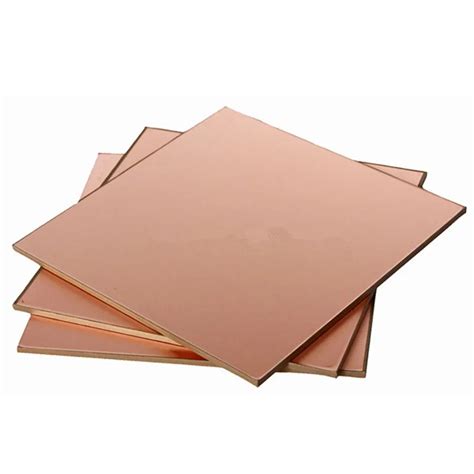
Environmental Impact Of Metal Core PCB Production In China
The production of metal core printed circuit boards (PCBs) in China has become a significant component of the global electronics manufacturing industry. As the demand for advanced electronic devices continues to rise, so does the need for efficient and reliable PCBs, which serve as the backbone of these devices. However, the environmental impact of metal core PCB production in China is a growing concern that warrants careful consideration. This article explores the various environmental implications associated with this industry, highlighting both the challenges and potential solutions.
To begin with, the manufacturing process of metal core PCBs involves several stages that can have detrimental effects on the environment.
The initial phase includes the extraction and processing of raw materials, such as aluminum or copper, which are essential for the metal core. These activities often result in significant energy consumption and greenhouse gas emissions. Furthermore, the mining of these metals can lead to habitat destruction and soil degradation, posing a threat to local ecosystems.
As the production process advances, the fabrication of PCBs involves the use of various chemicals and solvents.
These substances are necessary for etching, cleaning, and plating the circuit boards. However, improper handling and disposal of these chemicals can lead to water and soil contamination. In China, where environmental regulations have historically been less stringent, there have been instances of chemical spills and improper waste management practices, exacerbating the environmental impact.
Moreover, the energy-intensive nature of PCB manufacturing contributes to the carbon footprint of the industry.
The use of high-temperature processes and machinery requires substantial amounts of electricity, often sourced from coal-fired power plants in China. This reliance on fossil fuels not only increases carbon emissions but also contributes to air pollution, which is a pressing issue in many industrial regions of the country.
Despite these challenges, there are ongoing efforts to mitigate the environmental impact of metal core PCB production in China.
One approach is the adoption of cleaner production technologies and practices. For instance, manufacturers are increasingly investing in energy-efficient equipment and exploring alternative energy sources, such as solar or wind power, to reduce their reliance on coal. Additionally, advancements in chemical recycling and waste treatment technologies are being implemented to minimize the release of harmful substances into the environment.
Furthermore, the Chinese government has been taking steps to strengthen environmental regulations and enforcement.
Policies aimed at reducing industrial emissions and promoting sustainable manufacturing practices are gradually being introduced. These measures are encouraging companies to adopt greener practices and invest in research and development to create more environmentally friendly production methods.
In conclusion, while the production of metal core PCBs in China presents several environmental challenges, there are also opportunities for improvement. By embracing cleaner technologies, enhancing regulatory frameworks, and fostering a culture of sustainability within the industry, it is possible to reduce the environmental impact of this crucial sector. As global demand for electronic devices continues to grow, it is imperative that both manufacturers and policymakers work collaboratively to ensure that the production of metal core PCBs aligns with environmental sustainability goals. Through concerted efforts, it is possible to balance the economic benefits of this industry with the need to protect and preserve the environment for future generations.

